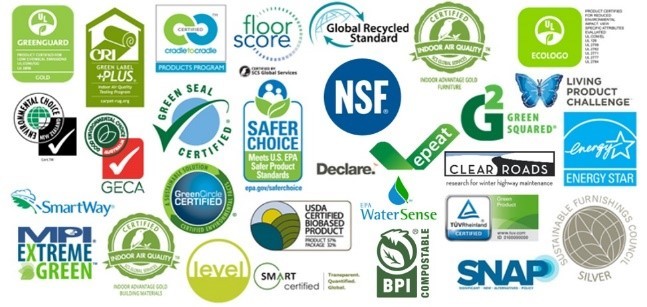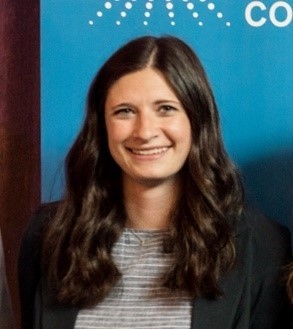|
Welcome to the U.S. Environmental Protection Agency’s (EPA’s) Pollution Prevention (P2) newsletter! Through this newsletter, we will provide information on upcoming events, as well as tools and resources to help implement and improve P2 initiatives. |
|
TRI Releases Drop 9 Percent in 2019
On January 12, 2021 EPA published its analysis of Toxics Release Inventory (TRI) data for 2019. The report is based on detailed information that U.S. facilities submit to EPA on their management of toxic chemicals, and the analysis interprets this information and examines trends in releases, waste management practices, and P2 activities. This year’s analysis includes the following highlights:
- 21,393 facilities reported to TRI for 2019
- TRI facilities reported 3.4 billion pounds of releases to air, water, and land
- 89% of the TRI chemical waste that facilities managed was not released due to preferred waste management practices such as recycling
- From 2018 to 2019, releases of TRI chemicals decreased by 9% (329 million pounds)
- Since 2007, releases to the environment have decreased by 19%, driven by declining air releases
- Air releases decreased by 57% from 2007 to 2019
- TRI facilities implemented 3,285 new source reduction activities in 2019. Learn more about these opportunities with EPA’s TRI Pollution Prevention (P2) Search Tool.
Learn more about the TRI Program and the 2019 TRI National Analysis.
|
P2 Webinar Series
Did you miss a recent webinar? Check out the EPA P2 Program webinar webpage to listen to webinars you might have missed or to revisit ones for a refresher.
|
|
P2 Intern Programs
Many state P2 programs place student interns with businesses that are interested in implementing cost-effective ways to cut or eliminate waste from their operations. Highlighted here are two intern programs, one in Iowa and one in Minnesota.
- Since the Iowa P2 Intern Program began in 2001, it has saved 175 companies more than $91 million, with dramatic environmental results. In addition, internships have:
- Provided opportunities for students to gain vital career experience;
- Given manufacturers access to new talent after graduation; and
- Provided collaboration opportunities for universities and businesses in the community.
-
Minnesota’s MnTAP Intern Program has also seen much success. Its 2020 report – MnTAP Solutions – provides information on the 2020 intern program’s successes. Per the report, if host companies implemented the recommendations identified by their 2020 interns, the companies together could save $4.25 million annually.
The P2 Intern Affinity group had its first meeting of the year in January 2021. The group’s meetings are an opportunity for EPA P2 grantees who have P2 internship programs and others to share information and work together to develop solutions. At the peak of the meeting, over 50 participants provided feedback on the development of a P2 101 training course (designed for various audiences) and established long term goals for the group. As a result, the P2 Intern Affinity group decided to meet bi-monthly to:
- Develop a sense of community
- Establish mentor/mentee relationships
- Share best practices and lessons learned
- Gain specific technical knowledge or access to technical materials
If interested in joining the P2 Intern Affinity group, e-mail Natalie Hummel (HQ) at hummel.natalie@epa.gov.
|
|
Simplify Sustainable Purchasing with Our Recommendations of Specifications, Standards, and Ecolabels
Don’t forget to include sustainable purchasing in you P2 planning! Our Environmentally Preferable Purchasing (EPP) program has put together a helpful tool to assist purchasers in identifying credible and effective ecolabels in 25 key purchase categories; including electronics, building materials, cleaning products, and more. Check out our full list of recommendations and quickly find certified products that meet your sustainable purchasing needs.
For questions, you may reach out to epp@epa.gov.

|
|
Introducing: Jenna Larkin, OPPT, EPP

Jenna Larkin is an Environmental Protection Specialist in EPA’s Office of Pollution Prevention and Toxics (OPPT). She is a staff member in the Environmentally Preferable Purchasing (EPP) program, which helps to simplify sustainable procurement across the entire federal government and influence the more than $550 billion that the federal government spends each year on products and services. Jenna helps to manage the Recommendations of Specifications, Standards and Ecolabels which acts as a tool to help federal purchasers identify credible and effective standards/ecolabels in key purchase categories. Jenna also participates in the development of product sustainability standards. She is currently the lead for the professional services sector and provides technical support for the electronics and building materials sectors. Jenna also assists with the Food and Beverage Manufacturing grantees and is the P2 communications lead, which includes crafting the monthly P2 newsletters.
Previously, Jenna attended Indiana University’s School of Public and Environmental Affairs where she received dual master’s degrees in Environmental Science and Public Affairs. She also holds a Bachelor of Science in Environmental Science from University at Albany (SUNY). Outside of EPA, Jenna enjoys playing softball and sharing environmentally conscious tips and tricks with her friends and family.
|
|
|
Share Your P2 Stories through Social Media!
Looking for a way to spread some Valentine's love this month? We’ve got you covered! Share your love of P2 via twitter and make sure to tag @ChemSafety!
|
|
The P2 Hub Helpline Is at Your Service!
The P2 Hub Helpline offers information and resources about pollution prevention. Please contact the Helpline at p2hub@epa.gov or (202) 566-0799.
Stay Connected!
|
|
|
|